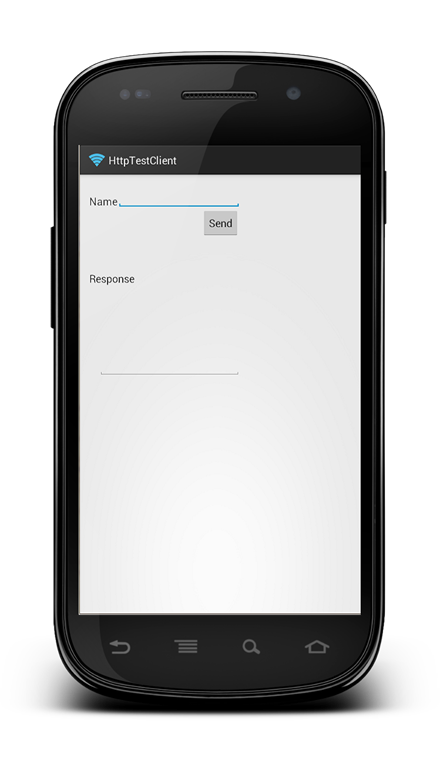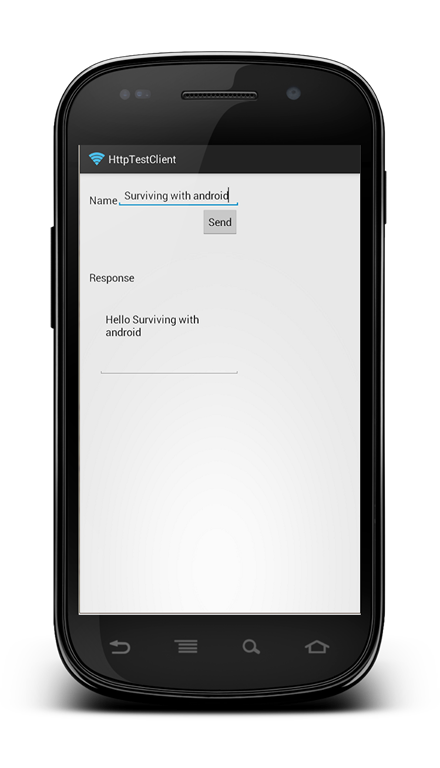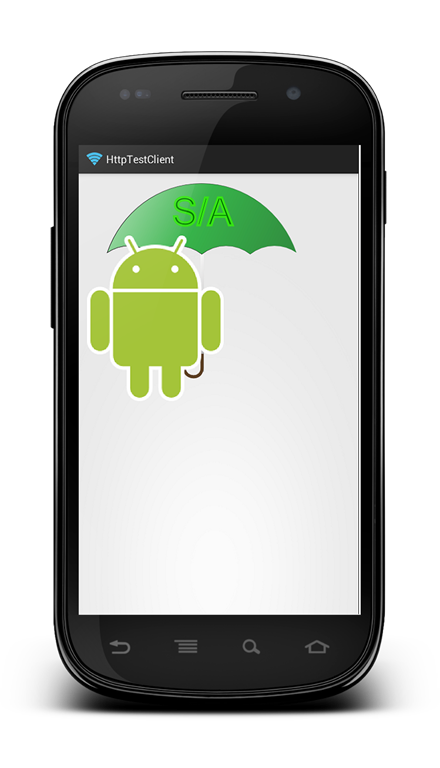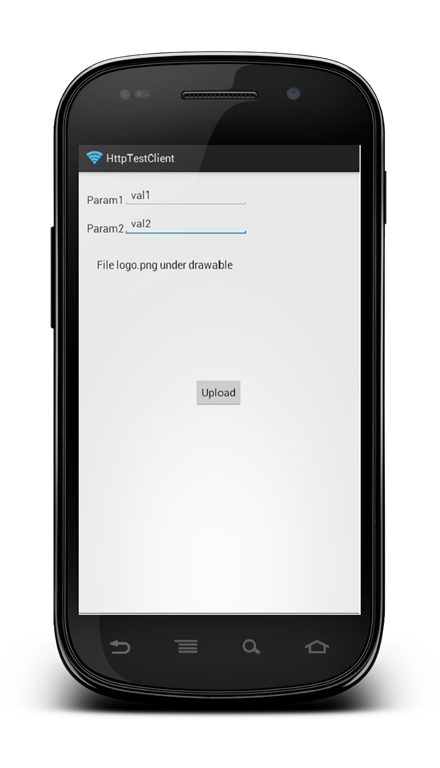Android HTTP Client: GET, POST, Download, Upload, Multipart Request
Often Android apps have to exchange information with a remote server. The easiest way is to use the HTTP protocol as base to transfer information. There are several scenarios where the HTTP protocol is very useful like downloading an image from a remote server or uploading some binary data to the server. Android app performs GET or POST request to send data. In this post, we want to analyze how to use HttpURLConnection to communicate with a remote server. We will cover three main topics:
- GET and POST requests
- Download data from the server
- Upload data to the server using MultipartRequest
As a server we will use three simple Servlet running inside Tomcat 7.0. We won’t cover how to create a Servlet using API 3.0 but the source code will be available soon.
GET and POST requests
GET and POST requests are the base blocks in HTTP protocol. To make this kind of requests we need first to open a connection toward the remove server:
1 2 3 4 5 | HttpURLConnection con = (HttpURLConnection) ( new URL(url)).openConnection();con.setRequestMethod("POST");con.setDoInput(true);con.setDoOutput(true);con.connect(); |
In the first line we get the HttpURLConnection, while in the line 2 we set the method and at the end we connect to the server.
Once we have opened the connection we can write on it using the OutputStream.
1 | con.getOutputStream().write( ("name=" + name).getBytes()); |
As we already know parameters are written using key value pair.
The last step is reading the response, using the InputStream:
1 2 3 4 5 | InputStream is = con.getInputStream();byte[] b = new byte[1024];while ( is.read(b) != -1) buffer.append(new String(b));con.disconnect(); |
Everything is very simple by now, but we have to remember one thing: making an HTTP connection is a time consuming operation that could require long time sometime so we can’t run it in the main thread otherwise we could get a ANR problem. To solve it we can use an AsyncTask.
01 02 03 04 05 06 07 08 09 10 11 12 13 14 15 16 | private class SendHttpRequestTask extends AsyncTask<String, Void, String>{ @Override protected String doInBackground(String... params) { String url = params[0]; String name = params[1]; String data = sendHttpRequest(url, name); return data; } @Override protected void onPostExecute(String result) { edtResp.setText(result); item.setActionView(null); }} |
Running the app we get:
As we can see we post a name to the server and it responds with the classic ‘Hello….’. On the server side we can check that the server received correctly our post parameter:
Download data from server
One of the most common scenario is when an Android App has to download some data from a remote sever. We can suppose that we want to download an image from the server. In this case we have always to use an AsyncTask to complete our operation, the code is shown below:
01 02 03 04 05 06 07 08 09 10 11 12 13 14 15 16 17 18 19 20 21 22 23 24 25 26 | public byte[] downloadImage(String imgName) { ByteArrayOutputStream baos = new ByteArrayOutputStream(); try { System.out.println("URL ["+url+"] - Name ["+imgName+"]"); HttpURLConnection con = (HttpURLConnection) ( new URL(url)).openConnection(); con.setRequestMethod("POST"); con.setDoInput(true); con.setDoOutput(true); con.connect(); con.getOutputStream().write( ("name=" + imgName).getBytes()); InputStream is = con.getInputStream(); byte[] b = new byte[1024]; while ( is.read(b) != -1) baos.write(b); con.disconnect(); } catch(Throwable t) { t.printStackTrace(); } return baos.toByteArray();} |
This method is called in this way:
01 02 03 04 05 06 07 08 09 10 11 12 13 14 15 16 17 18 19 20 21 22 | private class SendHttpRequestTask extends AsyncTask<String, Void, byte[]> { @Override protected byte[] doInBackground(String... params) { String url = params[0]; String name = params[1]; HttpClient client = new HttpClient(url); byte[] data = client.downloadImage(name); return data; } @Override protected void onPostExecute(byte[] result) { Bitmap img = BitmapFactory.decodeByteArray(result, 0, result.length); imgView.setImageBitmap(img); item.setActionView(null); }} |
Running the app we have:
Upload data to the server using MultipartRequest
This the most complex part in handling http connection. Natively HttpURLConnection doesn’t handle this type of request. It can happen that an Android App has to upload some binary data to the server. It can be that an app has to upload an image for example. In this case the request get more complex, because a “normal” request isn’t enough. We have to create a MultipartRequest.
A MultipartRequest is a request that is made by different parts like parameters and binary data. How can we handle this request?
Well the first step is opening a connection informing the server we wants to send some binary info:
01 02 03 04 05 06 07 08 09 10 | public void connectForMultipart() throws Exception { con = (HttpURLConnection) ( new URL(url)).openConnection(); con.setRequestMethod("POST"); con.setDoInput(true); con.setDoOutput(true); con.setRequestProperty("Connection", "Keep-Alive"); con.setRequestProperty("Content-Type", "multipart/form-data; boundary=" + boundary); con.connect(); os = con.getOutputStream();} |
In the line 6 and 7 we specify the request content-type and another field called boundary. This field is a char sequence used to separate different parts.
For each part we want to add we need to specify if it is text part like post parameter or it is a file (so binary data).
01 02 03 04 05 06 07 08 09 10 11 | public void addFormPart(String paramName, String value) throws Exception { writeParamData(paramName, value);}private void writeParamData(String paramName, String value) throws Exception { os.write( (delimiter + boundary + "\r\n").getBytes()); os.write( "Content-Type: text/plain\r\n".getBytes()); os.write( ("Content-Disposition: form-data; name=\"" + paramName + "\"\r\n").getBytes());; os.write( ("\r\n" + value + "\r\n").getBytes());} |
where
1 2 | private String delimiter = "--";private String boundary = "SwA"+Long.toString(System.currentTimeMillis())+"SwA"; |
To add a file part we can use:
01 02 03 04 05 06 07 08 09 10 11 | public void addFilePart(String paramName, String fileName, byte[] data) throws Exception { os.write( (delimiter + boundary + "\r\n").getBytes()); os.write( ("Content-Disposition: form-data; name=\"" + paramName + "\"; filename=\"" + fileName + "\"\r\n" ).getBytes()); os.write( ("Content-Type: application/octet-stream\r\n" ).getBytes()); os.write( ("Content-Transfer-Encoding: binary\r\n" ).getBytes()); os.write("\r\n".getBytes()); os.write(data); os.write("\r\n".getBytes());} |
So in our app we have:
01 02 03 04 05 06 07 08 09 10 11 12 13 14 15 16 17 18 19 20 21 22 23 24 25 26 27 28 29 30 31 32 33 34 35 | private class SendHttpRequestTask extends AsyncTask<String, Void, String> { @Override protected String doInBackground(String... params) { String url = params[0]; String param1 = params[1]; String param2 = params[2]; Bitmap b = BitmapFactory.decodeResource(UploadActivity.this.getResources(), R.drawable.logo); ByteArrayOutputStream baos = new ByteArrayOutputStream(); b.compress(CompressFormat.PNG, 0, baos); try { HttpClient client = new HttpClient(url); client.connectForMultipart(); client.addFormPart("param1", param1); client.addFormPart("param2", param2); client.addFilePart("file", "logo.png", baos.toByteArray()); client.finishMultipart(); String data = client.getResponse(); } catch(Throwable t) { t.printStackTrace(); } return null; } @Override protected void onPostExecute(String data) { item.setActionView(null); }} |
Running it we have:
Source code @ github.










Small tip: It could also be worth to take a look at volley to do reliable and fast networking on android.
https://developers.google.com/events/io/sessions/325304728
I had to use bot http requests and volley in my projects and I can tell you that with volley is much faster done and its easly implemented. You can even cash the image without any effort. But thanks for the good example of http requests.
Maybe it could be an interested topic to talk on. Thx
i have a question can i send the HTTP request from my android device to Google gcm to send the message to other android device…
hey from where can i get a server side code ???
plz post the link ..
A HttpRequest with AsyncTask like this is pretty if we want to update a view in onPostEecute but if we want to update via a delegate and in a Method in Main Activity, this AsyncTask takes too long and we must wait until the result is available. I.e. last week I had to perform the fill of a ListView with data from a Server and I got data too late with such a schema but with own customized events I could manage it.
Thank you so much for the simple nice code!!!!!
on line 99 there is an error and cant past it . Cannot instantiate the type HttpClient
I solved this problem by rename class HttpClient to …. mHttpClient
hi i have a project that i should send an image(that captured with picamera with pressing a button)from raspberry pi to my android smartphone.its a doorbell project and i need a notification when the smartphone recieve the image.i should create an android app that recieve this image.should i use this codes?and which one should i use?
i am also looking for that
Hi! I have a chat app, and I want to add the functionality to send files to my buddy, and my buddy also send me files too. How could I do this? Thanks!
thanks all guys
http stands for hypertext transfer protocol is a type of protocol used to access website . Without this protocol you can not access any site. https is the secure version if it. this protocol has different services like get , post , request.